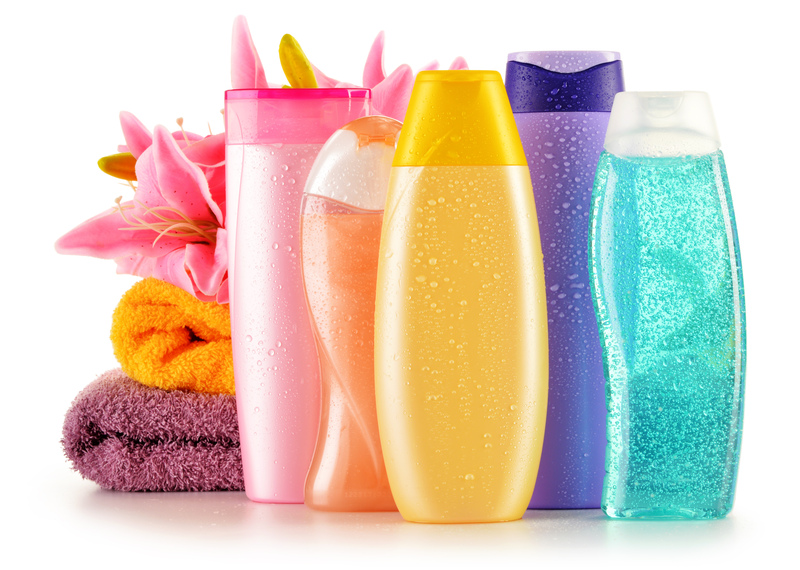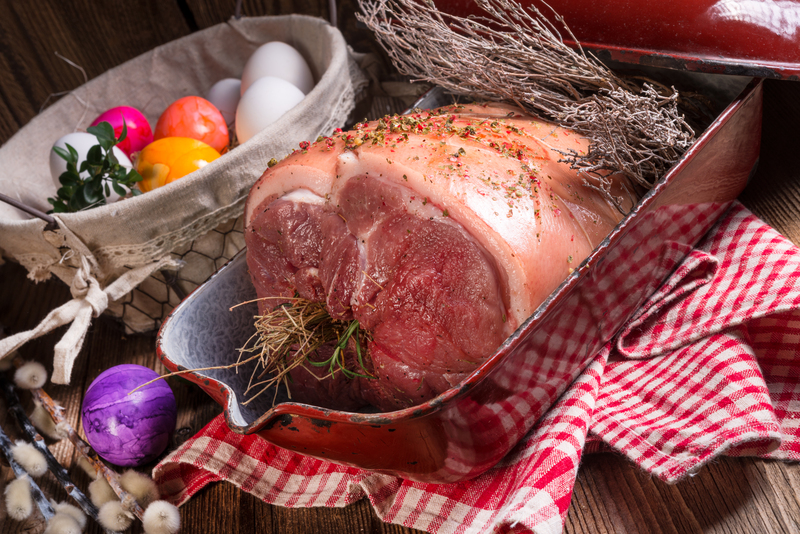Effective Tips for Cleaning Stubborn Burnt Residue Off Your Stovetop
Posted on 22/05/2025
Effective Tips for Cleaning Stubborn Burnt Residue Off Your Stovetop
Are you struggling with burnt-on grime that's clinging to your stovetop? Don't worry - even the most persistent scorched messes can be tackled with the right techniques and a little patience. In this comprehensive guide, you'll discover effective methods and practical advice for removing stubborn burnt residue from your stovetop. Whether you have a gas, electric, or glass stove, we've gathered the best tips to help restore your kitchen to its sparkling best.
Understanding the Challenges of Burnt-On Residue
Cooking accidents happen to the best of us. Maybe you've let a pot boil over, or sauce splattered and was left unattended, resulting in carbonized food stuck to the stovetop. These burnt residues can be incredibly difficult to clean with just soap and water. Over time, they build up and can even impact the performance of your stove, making regular cleaning and maintenance essential.

Why Regular Stovetop Cleaning Is Important
- Hygiene: Food particles and burnt-on substances can harbor bacteria and unpleasant odors if left unattended.
- Efficiency: Clean burners and stove surfaces promote better heat distribution and cooking performance.
- Longevity: Frequent cleaning preserves the lifespan of your appliance, avoiding costly replacements or repairs.
- Appearance: A sparkling, residue-free stovetop enhances the overall look of your kitchen.
Before You Begin: Safety Precautions
- Always turn off and unplug your stove (if electric) before cleaning to avoid accidents.
- Make sure all burners are cool to the touch.
- Wear gloves if using strong cleaning solutions to protect your hands.
Gathering Your Cleaning Supplies
Different cleaning tasks require different tools. Here is a helpful list for tackling tough, burnt-on residue on any type of stovetop:
- Baking soda
- White vinegar
- Lemon juice
- Dish soap
- Non-scratch scrubbing pads or sponges
- Plastic scraper or old credit card
- Spray bottle
- Microfiber cloths
- Razor blade scraper (for glass stovetops)
Step-By-Step Guide: Cleaning Stubborn Burnt Stovetop Residue
1. Remove Loose Debris and Components
Start by removing any pans, grates, or burner covers from the stove. Gently brush away crumbs and loose food particles with a dry cloth or paper towel.
2. Apply a Cleaning Solution
Prepare a cleaning paste by mixing baking soda with a little water or lemon juice. Spread this over the burnt-on residue.
- Baking soda and water forms a gentle abrasive that's safe on most surfaces.
- Lemon juice adds natural degreasing and deodorizing power.
3. Let the Cleaning Paste Sit
Allow the paste to sit on the burnt spots for at least 15-30 minutes. For more stubborn stains, you can let it sit for up to an hour. This soaking time helps to loosen scorched residue, making it easier to remove and minimizing the need for excessive scrubbing.
4. Gentle Scrubbing
Using a non-scratch scrubbing pad or sponge, rub the area in circular motions. Never use steel wool or metal scrubbers, which can damage delicate stovetop surfaces. For electric stove drip pans or burners, you can also try soaking them separately in hot, soapy water before scrubbing.
5. Tackle Tough Spots with a Plastic Scraper
If some burnt residue is still stubbornly sticking, gently use a plastic scraper or an old credit card to lift off the debris. Keep the angle low and move slowly to avoid scratching the surface.
6. Use Vinegar for Extra Stubborn Residue
Spray white vinegar directly onto the remaining burned areas. The acid dissolves stubborn grime and provides a streak-free finish. Let it bubble and fizz for a couple of minutes, then wipe away with a damp cloth.
7. Final Wipe-Down
Dampen a microfiber cloth in clean water and thoroughly wipe the entire surface to remove any cleaning residue and loosened grime. Buff the stovetop dry with a fresh microfiber towel for a like-new shine.
Cleaning Tips for Specific Types of Stovetops
Gas Stovetops
- Remove burner grates and soak them in hot, soapy water for at least 15 minutes.
- Use a toothbrush or soft brush to clean burner caps and heads, making sure that ports are clear of food debris.
- Rinse thoroughly, dry completely, and reassemble once all parts are sparkling clean.
Electric Coil Stovetops
- For removable coils, unplug and lift them gently.
- Wipe underneath with a damp sponge but never immerse the coils in water.
- Clean drip pans and surrounding surfaces as you would with any burnt-on stain.
Glass or Ceramic Stovetops
- Use a specialized ceramic stovetop cleaner, or stick with the baking soda and vinegar method.
- For truly stubborn stains, hold a razor blade scraper at a 45-degree angle and gently nudge burnt residue off in small sections.
- Finish with a microfiber polish to restore the glass's shine.
Natural Alternatives for Eco-Friendly Cleaning
- Baking soda and lemon: Mix into a thick paste for a naturally fresh scent and extra cleaning power.
- Vinegar and water solution: Use as a spray to cut through grease and help deodorize.
- Salt paste: Coarse salt mixed with a little water or lemon juice can scrub away stubborn spots without harsh chemicals.
Pro Tip for Persistent Burn Marks
If burnt residue seems to be baked into your stovetop, try this:
- Lay a hot, damp towel over the problem area for 10-15 minutes to soften the burnt residue.
- Scrape gently with a plastic scraper and repeat as needed before proceeding with your main cleaning technique.
Prevention: Keeping Your Stovetop Burnt-Residue Free
While knowing the best tips for cleaning burnt stovetop residue is helpful, prevention is even better. Here are a few strategies:
- Wipe up spills immediately before they have a chance to dry and burn.
- Use splatter guards when frying or cooking sauces.
- Clean your burners and drip pans regularly to prevent buildup.
- Do a quick daily wipe-down after cooking, and a more thorough weekly cleaning to tackle minor stains before they become major problems.
Common Mistakes to Avoid When Cleaning Your Stovetop
- Using abrasive tools: Steel wool, wire brushes, or rough scouring pads can scratch and permanently damage glass and enamel surfaces.
- Letting spills dry and bake on: Addressing messes quickly reduces scrubbing effort later on.
- Forgetting to check manufacturer's instructions: Always review your appliance manual for any specific cleaning restrictions or recommendations.
Recommended Commercial Cleaners for Burnt-On Residue
If natural and household solutions aren't quite enough for your toughest burnt-on messes, consider using a commercial stovetop cleaner. Look for products specifically labeled for your type of stovetop, such as:
- Bar Keepers Friend (great for both gas and glass surfaces)
- Weiman Glass Cook Top Cleaner
- Cerama Bryte Cooktop Cleaner
- The Pink Stuff Cleaning Paste
Always test a small spot first to ensure no adverse reactions.

FAQs About Cleaning Burnt Stovetops
How often should I clean my stovetop?
For best results, wipe your stovetop down after every use, and do a thorough cleaning at least once a week. This minimizes the risk of burnt-on residue accumulating.
What should I do if I accidentally scratch my glass stove?
Minor scratches may polish out with specialized cleaners, but deeper ones may be permanent. Always use non-abrasive tools and cleaners designed for glass or ceramic stovetops.
Are there any home remedies for removing burnt stains?
Baking soda and vinegar paste is one of the best home remedies for stubborn stains. Lemon juice, salt, and even hydrogen peroxide (for ceramic tops) can also help break down tough grime.
Can I use bleach on my stovetop?
Generally, bleach is not recommended for stovetops, especially for glass or ceramic, as it can discolor or damage the surface. Stick to milder solutions like baking soda, vinegar, and specialized stovetop cleaners.
Final Thoughts: Shine Bright With These Proven Cleaning Tips
Maintaining a spotless cooking area doesn't have to be overwhelming. With the above effective stovetop cleaning tips, you can confidently tackle even the most stubborn burnt-on residue, no matter your appliance type. Routine upkeep, combined with the little tricks outlined here, ensures your stovetop will not only look beautiful but perform at its best for years to come.
Next time you face a stubborn burnt stain, remember these expert tips and your stovetop will thank you with a gleaming, sanitary surface every time you cook!
- Act quickly to clean up spills.
- Use the right tools and natural cleaners for your surface type.
- Prevent buildup with regular, gentle wipe-downs.
For more helpful home cleaning articles and kitchen care advice, stay tuned to our website.



